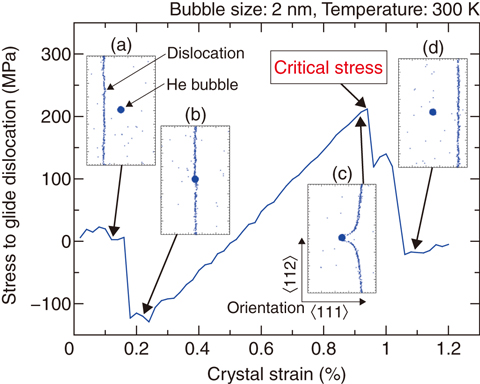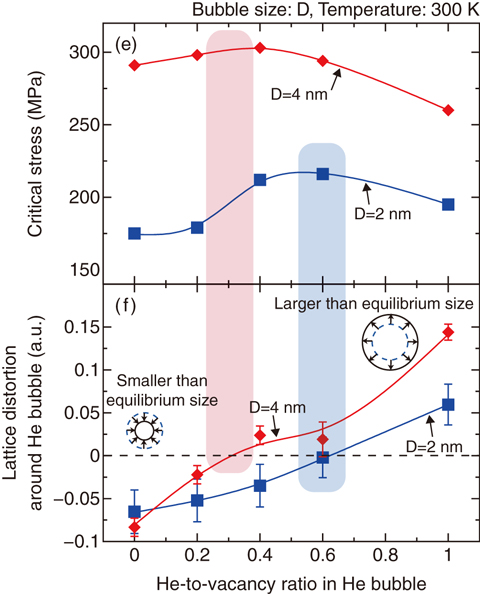
Fig.4-9 Interaction process of a dislocation gliding through a He bubble

Fig.4-10 Relationship between (e) critical stresses and (f) lattice distortions around He bubbles
In the main structural materials comprising nuclear reactors, helium (He) atoms are produced by transmutation reactions; in addition, spherical voids are formed by supersaturation of vacancies under significantly high-energy neutron irradiation, such as those in fast-breeder reactors. He atoms are known to accumulate in the voids, coalescing in the form of He bubbles. These nanometric defects induce hardening of irradiated materials by preventing the dislocation motion that governs material deformation, and are thus responsible for the degradation of mechanical properties. Therefore, understanding the hardening mechanism owing to the interaction of a dislocation with nanometric defects is an important issue for predicting property changes in nuclear-reactor materials.
To address this issue, we have performed a detailed investigation of the interaction of a dislocation with a He bubble using a molecular dynamics simulation capable of dynamically predicting the motion of each atom based on Newton’s equation of motion. Fig.4-9 shows a typical case of the temporal behavior of the interaction of a dislocation gliding through a He bubble in pure iron, which is the base material of nuclear reactors. Just before the dislocation escapes from the He bubble, the stress reaches a maximum value, referred to as the critical stress, which is used as a measure of the extent of hardening. By focusing attention on the fact that the estimated lattice distortion around a He bubble varies with the He-to-vacancy ratio, we investigated the influence of this ratio upon the critical stress. Fig.4-10 shows the relation between (e) critical stresses and (f) lattice distortions around He bubbles for 2- and 4-nm bubbles as a function of the He-to-vacancy ratio. We found that the higher critical stress is correlated with smaller lattice distortion for each bubble size. Using the visualization technique for extracting the specified atoms, it was revealed that through atomic exchange between the intersecting dislocation and the bubble surface, the number of vacancies in the bubble varied so as to reduce the lattice distortion, i.e., the energy relaxation. This indicates that bubbles with larger lattice distortions are subjected to larger energy relaxation owing to the intersecting dislocation, resulting in lower critical stresses.
This result has extended our understanding of the hardening mechanism induced by He bubbles, which are nanometric defects in irradiated materials. The prediction accuracy of the property changes in nuclear reactor materials under high-energy neutron irradiation is expected to be improved.
This work was partly supported by the Japan Society for the Promotion of Science (JSPS) KAKENHI Grant-in-Aid for Challenging Exploratory Research (No.24656425).